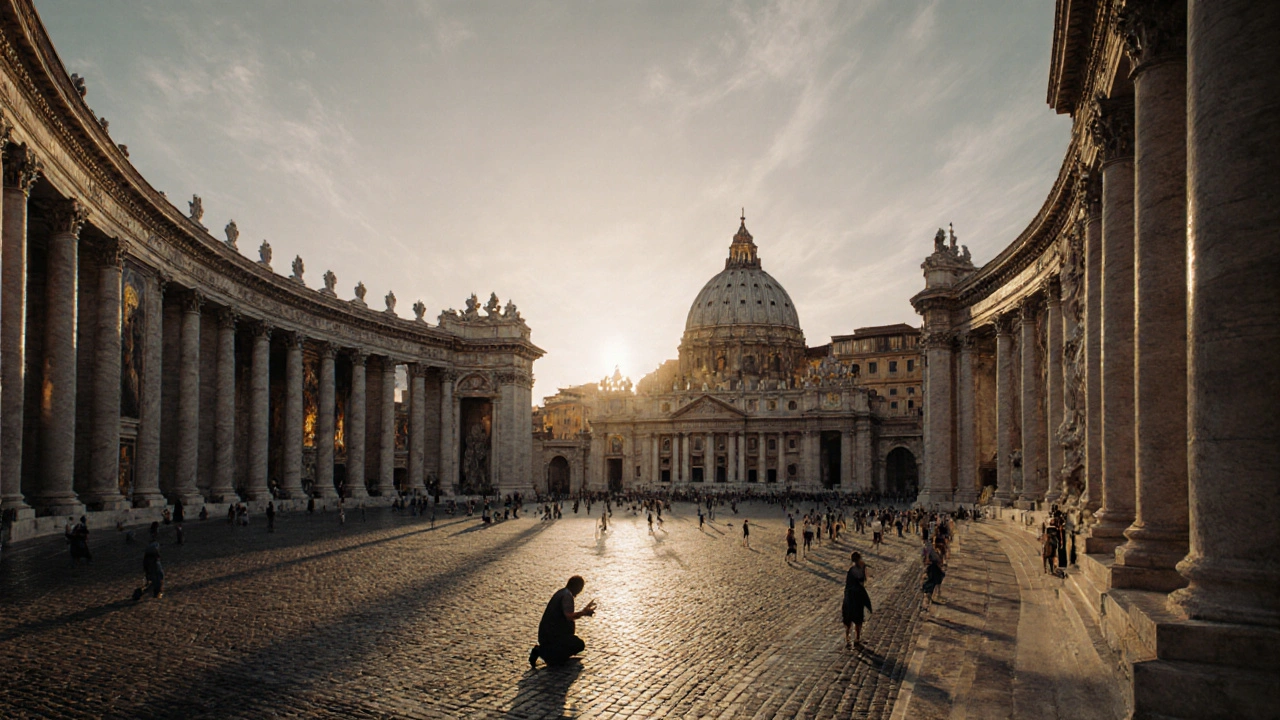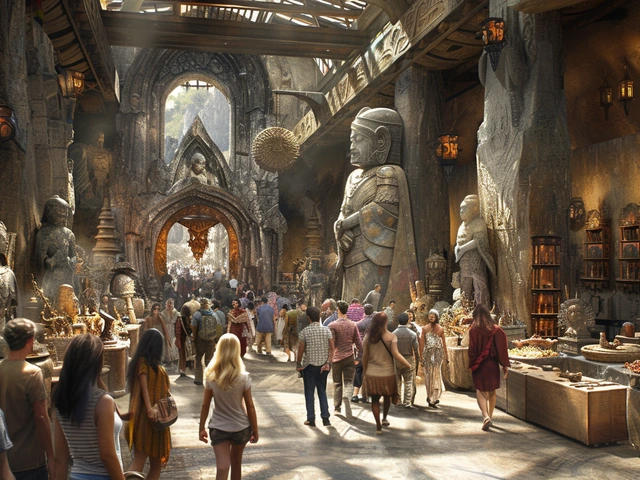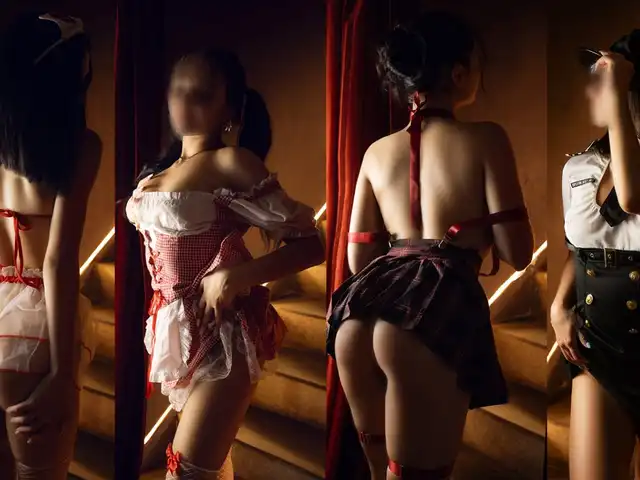By the mid-1600s, Europe was drowning in gold leaf, swirling drapery, and dramatic lighting. Churches glowed with ceiling frescoes that made you feel like you were staring into heaven. Opera houses burst with screaming sopranos and thundering bassoons. Paintings showed saints mid-miracle, their faces twisted in divine ecstasy. This wasn’t just decoration-it was power. The Baroque era wasn’t a style. It was a weapon.
How the Baroque Era Took Over Europe
The Baroque style didn’t start in an artist’s studio. It started in Rome, in the halls of the Catholic Church. After the Protestant Reformation ripped through Europe, the Vatican needed to win back hearts. So they turned to art. Not quiet, calm art. Not subtle symbolism. They wanted emotion. Drama. Overwhelming awe.
Pope Urban VIII hired Gian Lorenzo Bernini to design St. Peter’s Square. The colonnades curved like arms reaching out to embrace the faithful. Inside, the Baldacchino-a 95-foot-tall bronze canopy over the altar-loomed like a cathedral within a cathedral. Bernini didn’t just sculpt. He engineered emotion. His Baroque statues didn’t stand still. They twisted, gasped, reached. David wasn’t calm before the stone. He was mid-swing, muscles straining, eyes locked on Goliath.
Across the continent, kings copied the Vatican’s playbook. Louis XIV turned Versailles into a temple to absolute power. Every mirror, every gilded statue, every fountain was meant to make visitors feel small. In Spain, Velázquez painted court dwarfs with the same dignity as princes. In the Netherlands, Rembrandt used shadows like a knife-cutting through darkness to reveal the soul beneath the skin. His Return of the Prodigal Son isn’t a biblical scene. It’s a moment of forgiveness so heavy, you can feel the weight of years in the father’s hands.
The Music That Shook the Soul
Baroque wasn’t just visual. It was sound. And it was loud.
When Monteverdi premiered L’Orfeo in 1607, he didn’t just write an opera. He invented emotional storytelling through music. Strings trembled. Brass blared. Voices soared and cracked. The harpsichord wasn’t background noise-it was a heartbeat. Composers like Johann Sebastian Bach turned counterpoint into a mathematical religion. His Brandenburg Concertos didn’t just blend instruments. They argued, danced, and resolved in ways that still feel alive 300 years later.
Baroque music didn’t ask you to listen. It demanded you feel. The fugues of Bach, the wild ornamentation of Vivaldi, the haunting laments of Henry Purcell-they all shared one rule: emotion over restraint. Every note had a purpose. Every pause held tension. This wasn’t music for the background. It was music for the soul’s edge.
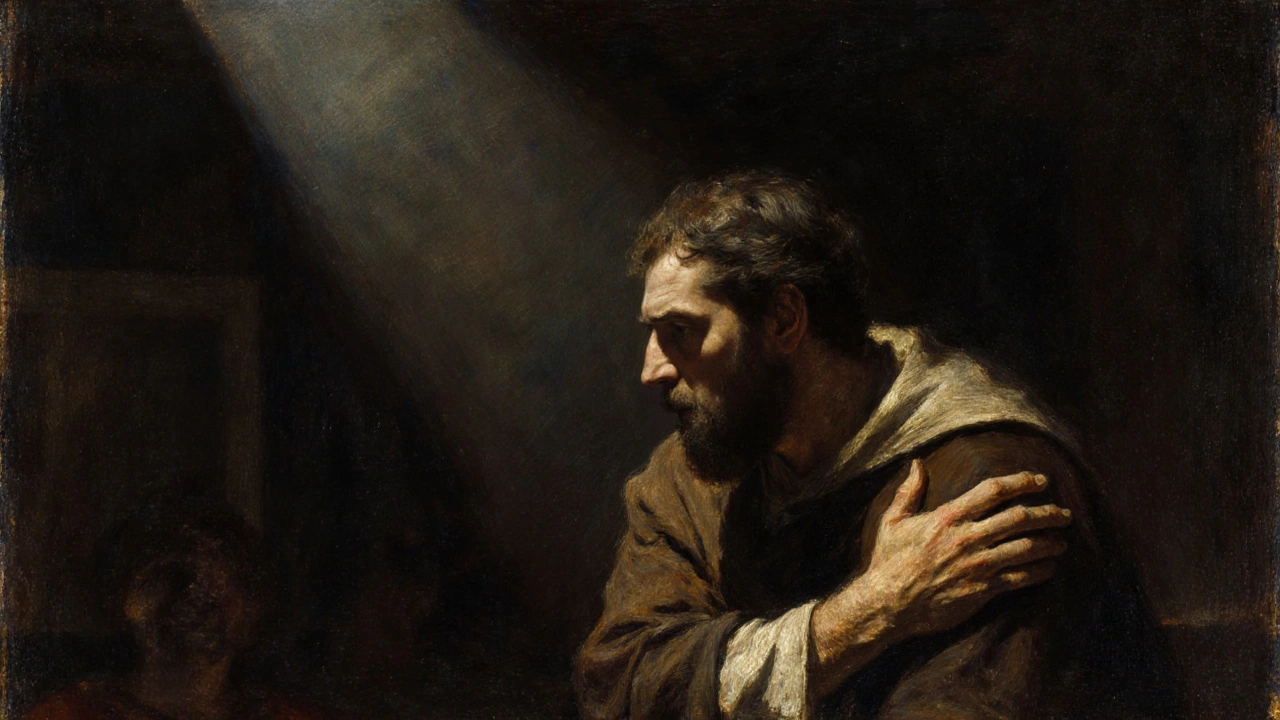
Architecture That Made You Kneel
Baroque buildings didn’t just house people. They broke them down.
Think of the Church of the Gesù in Rome. Its facade isn’t flat. It curves. It pushes forward. The columns don’t just support-they lean in, like they’re leaning into your confession. Ceilings didn’t just hold paint. They collapsed into the nave, turning heaven into a 3D illusion. Andrea Pozzo’s ceiling in Sant’Ignazio in Rome tricks your eyes into seeing a dome that doesn’t exist. You look up-and your stomach drops.
In Germany, the Würzburg Residence wasn’t a palace. It was a fever dream of marble, gold, and frescoes. The staircase ceiling, painted by Tiepolo, shows the four continents bowing to the Holy Roman Empire. You don’t walk up the stairs. You ascend through propaganda.
Even homes got the Baroque treatment. Wealthy merchants in Amsterdam hired carpenters to carve door frames with putti, acanthus leaves, and scrolls that looked like they were caught in a windstorm. The goal? To show you had money. But also-more importantly-that you understood the divine order of things.
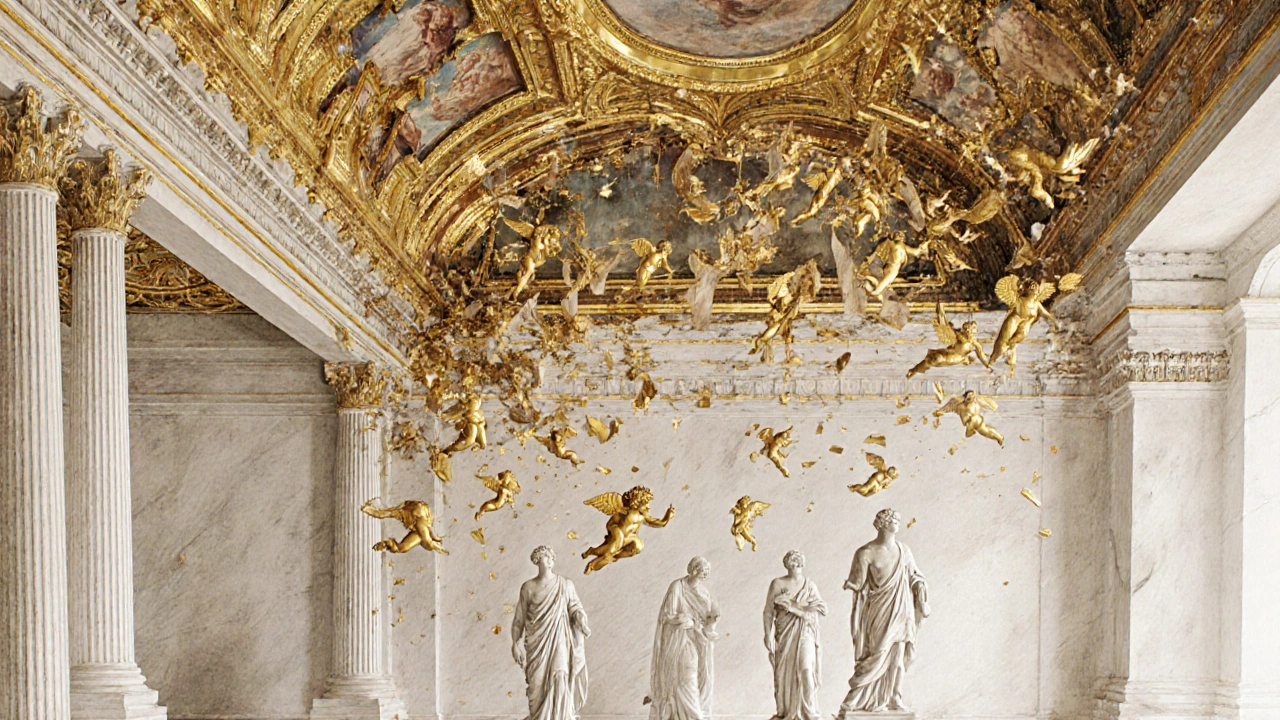
Why It All Crumbled
By the 1750s, the grandeur started to feel like a lie.
The same people who once bowed before Baroque splendor now saw it as excess. Kings were bankrupt. Churches were drowning in debt. The Enlightenment was rising. Thinkers like Voltaire mocked the idea that divine right needed gilded ceilings to be believable. Science was proving the universe wasn’t a stage for angels-it was governed by laws.
Then came the Rococo. A lighter, prettier cousin of Baroque. Pastels replaced gold. Cupids replaced saints. But even Rococo couldn’t last. By the 1780s, the French Revolution was brewing. The aristocracy’s gilded palaces became targets. The people didn’t want to be awed. They wanted justice.
Neoclassicism swept in like a cold wind. Clean lines. Symmetry. Marble that looked like ancient Greece, not a bishop’s dream. The Louvre’s new wing, built in the 1790s, had no curves, no drama, no gold. Just order. Just reason. Baroque’s emotional intensity was seen as irrational. Dangerous. Outdated.
The Legacy That Won’t Fade
Baroque didn’t die. It just changed shape.
Modern cinema still uses Baroque lighting. Think of the deep shadows and sudden bursts of light in Black Swan or The Revenant. That’s Rembrandt’s technique-light as a spotlight on human struggle. Pop music still uses Baroque harmonies. The layered vocals in Queen’s Bohemian Rhapsody? That’s a fugue. The emotional swell in Hans Zimmer’s scores? That’s Vivaldi in a digital suit.
Even architecture hasn’t forgotten. Frank Gehry’s Guggenheim Museum in Bilbao? It’s Baroque’s cousin-curves that make you feel something before you even step inside. The emotional impact of a space isn’t dead. It’s just waiting for the next revolution.
Baroque was never about beauty for beauty’s sake. It was about control. About belief. About making people feel something so strong they couldn’t look away. That’s why, even when the world rejected it, we still feel its pull. Because sometimes, we still need to be overwhelmed.
What defines the Baroque style in art?
The Baroque style is defined by intense emotion, dramatic lighting, dynamic movement, and rich detail. Artists used deep shadows (chiaroscuro), swirling compositions, and exaggerated expressions to create a sense of awe and tension. Figures appear in motion, often caught in a moment of crisis or revelation, pulling viewers into the scene rather than keeping them at a distance.
Who were the most important Baroque artists?
Gian Lorenzo Bernini dominated sculpture and architecture, turning stone into motion. Caravaggio revolutionized painting with his brutal realism and stark contrasts of light and dark. Rembrandt captured inner life with unmatched psychological depth. In music, Johann Sebastian Bach and George Frideric Handel built complex emotional worlds through counterpoint and harmony. Peter Paul Rubens brought energy and color to Flemish painting, while Diego Velázquez painted the Spanish court with quiet, devastating dignity.
How did Baroque music differ from earlier Renaissance music?
Renaissance music was balanced, polyphonic, and restrained-voices blended smoothly without one standing out. Baroque music broke that mold. It introduced basso continuo-a continuous harmonic foundation-and emphasized contrast: loud vs. soft, solo vs. ensemble, fast vs. slow. Melodies became more ornate, rhythms more driving. The goal shifted from harmony to emotional impact, making music feel like a story unfolding in real time.
Why did Baroque architecture use so much gold and ornamentation?
Gold and ornamentation weren’t just decorative-they were political. The Catholic Church and European monarchs used lavish interiors to project divine authority and absolute power. In an age without mass media, buildings were the ultimate billboard. A gilded ceiling in a church or palace told people: this institution is eternal, this ruler is chosen by God. The more overwhelming the space, the more it silenced doubt.
Did the Baroque era end suddenly?
No. The Baroque era faded gradually. By the 1740s, tastes began shifting toward lighter, more delicate styles like Rococo, especially in France and Austria. But in places like Germany and Italy, Baroque elements lingered into the 1770s. The real turning point was the French Revolution in 1789. The overthrow of the monarchy and the Church’s political power made Baroque’s grandeur seem not just outdated, but offensive. Neoclassicism emerged as the new ideal-clean, rational, and rooted in ancient democracy, not divine right.

